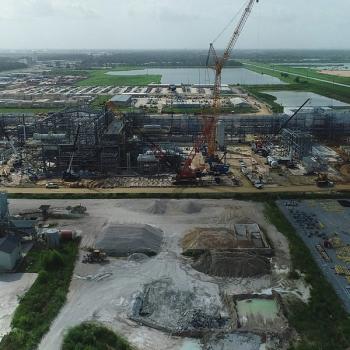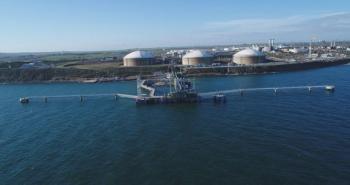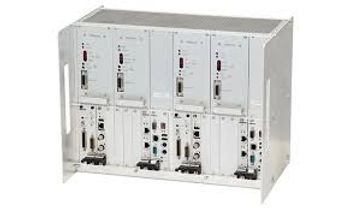
FT 4000: Ready for Prime Time
Dave Maher, Vice President for the FT4000 Program at PW Power Systems (PWPS), a group company of Mitsubishi Heavy Industries (MHI), talks about the launch of the new FT4000 aeroderivative turbine and how ownership changes have impacted the company.
How is it going with your new ownership?
We have been under MHI ownership for over a year now and during that time we have seen a great transformation. As MHI is very much an industrial business, we are now an important element of the company’s core activities. We continue to see an appetite for investment in research and development which is aimed towards the enhancement of our various products and services. Additionally, there are synergies between us that benefit both sides. MHI encompasses a wealth of industrial turbomachinery offerings such as large frame gas turbines and compressors. We can clearly benefit from that expertise. On the other side of the coin, we offer MHI a range of market-proven aeroderivatives, enabling it to participate in that end of the market for the first time.
How has this affected your relationship with Pratt & Whitney?
We continue to have a strong relationship with Pratt & Whitney. We are the exclusive licensee of the Pratt & Whitney’s aero engine technology for applications in the industrial space. We are using P&W core engine technology such as that in the PW4000, and use it to manufacture the industrial FT4000 SwiftPac. The new relationship is governed by a series of longterm agreements which effectively secure the relationship between Pratt and Whitney and MHI, encompassing both design and manufacture.
What’s the latest with the FT4000?
We successfully completed initial verification testing for the aeroderivative FT4000 gas turbine at the Pratt & Whitney testing complex in West Palm Beach, Florida this past September. Performance, emissions and structural design integrity were found to be consistent with pretest predictions and customer requirements. We are happy to report that it met all expectations and are now preparing for our final stages of testing planned at a customer installation early next year.
How extensive were the tests?
As one would expect with a new product introduction, we are going to great lengths to ensure the FT4000 meets or exceeds all requirements. To this end, we have implemented a structured test program over the past three months accumulating over 150 hours and 100 cycles on the product. As testing was accomplished at the Pratt & Whitney dedicated jet test facility in Florida, the engine was able to be put through its paces covering the full range of engine operating conditions under varying conditions. Testing was accomplished utilizing production ancillary systems integrated into the test cell, providing full load test capability on natural gas and liquid fuel. Water injection and wet compression systems were exercised throughout the test program with the engine performing as expected.
Where will the unit be used?
The end of initial testing represents an important step in the delivery of the first 120 MW simple-cycle FT4000 Swiftpac power generation unit to an Exelon Corporation plant operating as part of the Constellation Energy network in Aberdeen, Maryland. Equipment for this site began delivery in September of this year and the plant is expected to be commissioned and turned over to the customer by the middle of next year, supporting commercial operation by the end of 2015.
What are some of the specs of the FT4000?
With a modular design that leverages proven features of the successful FT8 Swiftpac power plant, the FT4000 engine offers a nominal 60-to-120 MW package of peaking and base-load power in a compact footprint. Powered by a Pratt & Whitney PW4000 derivative gas generator, the FT4000 engine is designed for simple-cycle, combined-cycle or cogeneration applications.
How does it differ from the PW4000?
The FT4000 core is more than 90% common with the aero PW4000. Leveraging this capability in the industrial FT4000 was an important element of our strategy for development. The PW4000 engine has now surpassed 34 million successful hours of operation since its initial introduction. We’ve made minor changes to some of the core casings aligned with industrial requirements as well as introduced a lowpressure spool while adding dual-fuel, water-injection combustion technology for low emissions, both NOx and CO.
How are orders going for this new machine? Presently we’ve sold three gas turbine units at two separate customer installation, two with Exelon in a 120 MW TwinPac configuration and a third in a 60 MW configuration with Albanesi, an existing FT8 customer in Argentina. We are now ramping up our efforts in the marketplace with the conclusion of our initial testing phase but remain focused on the completion of our next planned phase of testing scheduled at Exelon in Q1 of next year.
What markets are you targeting?
The initial version of the FT4000 is aimed squarely at our traditional power generation markets, sold in a water-injected combustor configuration. In addition to power generation, we are also interested in future growth within the oil & gas segment including further product development of a Dry Low NOx (DLN) configured FT4000 for suitable applications, both power generation and oil & gas. The PWPS FT8 aeroderivative is also offered in a DLN configuration. However, it has had limited market penetration largely due to PWPS’ former approach to the market. PWPS’ traditional scope of supply did not include compressor packages. Now that we are part of the MHI network, we are able to take advantage of global MHI’s compressor offerings in an effort to bring competitive aeroderivative gas turbine and compressor packages to the oil & gas market.
Newsletter
Power your knowledge with the latest in turbine technology, engineering advances, and energy solutions—subscribe to Turbomachinery International today.




